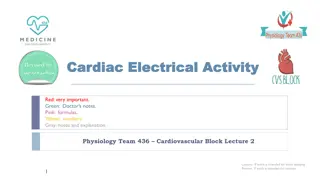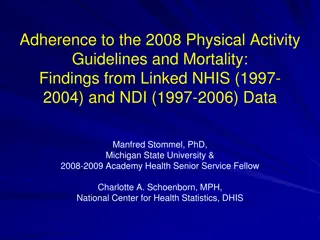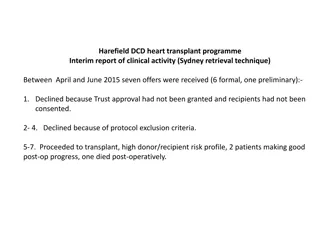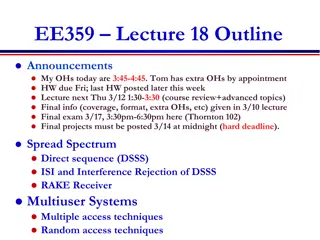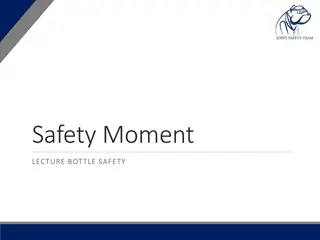
Quality Assurance in HIV Testing: Ministry Initiatives
Explore the Ministry of Health's comprehensive approach to quality assurance in HIV testing through initiatives like system monitoring, proficiency samples, staff competency assessment, and corrective action protocols.
Download Presentation

Please find below an Image/Link to download the presentation.
The content on the website is provided AS IS for your information and personal use only. It may not be sold, licensed, or shared on other websites without obtaining consent from the author. If you encounter any issues during the download, it is possible that the publisher has removed the file from their server.
You are allowed to download the files provided on this website for personal or commercial use, subject to the condition that they are used lawfully. All files are the property of their respective owners.
The content on the website is provided AS IS for your information and personal use only. It may not be sold, licensed, or shared on other websites without obtaining consent from the author.
E N D
Presentation Transcript
Cabbage Ball Instruction Print or write each of the positive and negative statements on individual paper Positive statements can be printed on green and blue paper Negative statements can be printed on yellow and white paper Sort these statements into a random order so that not all positive statements are together Start by crumpling the first statement into a tight small ball Add the next layer with another statement Repeat the process until all statements have been added to the ball. You may prepare two balls if you are not able to fit all the statement in one ball
Positive Statements
The Ministry of Health announced that a system for monitoring Quality Assurance would be implemented throughout all levels of rapid HIV testing.
The reference laboratory provided proficiency samples to test sites to help them evaluate their testing performance.
The Ministry of Health established a team to periodically monitor testing sites.
A test site is keeping records of the number of tests used each month in order to assure that an adequate supply of kits and reagents will be maintained.
A test site used standard forms and log sheets to make recording and review of data easier.
The competency of each staff performing HIV rapid tests was assessed twice a year to assure they have maintained the appropriate knowledge and skills to perform their job.
The testing site established a protocol for taking corrective actions to address PT failures.
Temperature logs were maintained for recording the temperature of the reagent/test kit storage area twice a day.
At the beginning of each day of testing, a responsible staff person evaluated the HIV rapid test kits by analyzing a known positive and known negative HIV control sample.
The testing site established a chain of command and assigned specific quality management tasks to responsible individuals.
The testing site implemented a plan to manage supplies and test kits used at the HIV rapid testing site.
New employees demonstrated competency before they were allowed to perform HIV rapid tests.
Test site staff helped define criteria for the materials and services needed to carry out quality HIV rapid testing.
The testing site assigned a person to receive and inspect incoming supplies and reagents.
Negative Statements
A new staff member failed to record the test results for 3 clients tested early in the day. Based on her memory, she entered the results later in the day.
New test kits were received and placed on the storage shelf in front of test kits that were already there.
A new staff member received no orientation to site policies and procedures before beginning to perform HIV rapid tests.
For three days a testing site manager did not return a call from a physician who had requested a copy of test results for her patient.
You noticed the standard operating procedure was missing from the test site. You decided to follow the SOP you borrowed from a neighboring country.
Due to staff shortages, the testing site cancelled the first scheduled internal assessment for the year.
Due to frequent problems with transport, the reference laboratory suspended shipping quality control materials to the sites in its province.
During lunch, the testing site manager overhead that a sharps incident had occurred earlier in the week but had not been reported.
Following an on-site assessment, several deficiencies were noted. The testing site manager decided that the deficiencies were minor and did not require any remedial action.
You noticed that the sharps container was missing from the testing area. You decided to use a plastic bag to collect the lancets until the end of the day when you had time to look for the sharps container.
The refrigerator that stored test reagents and controls stopped functioning overnight, but the temperature only went up 3 degrees above the acceptable range. You felt this was not a significant change and proceeded to test the clients.



